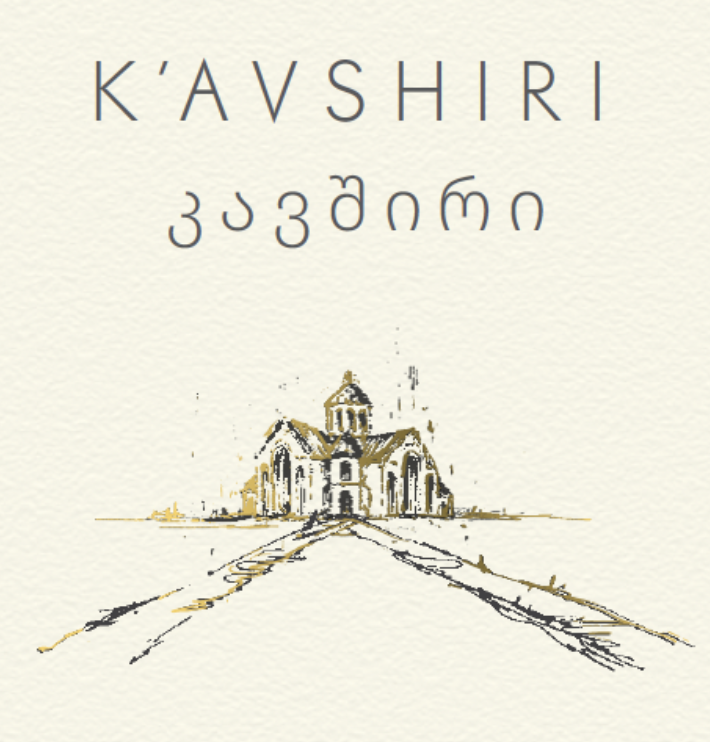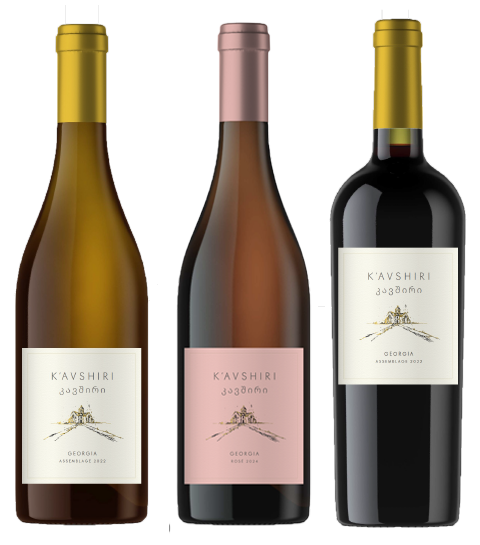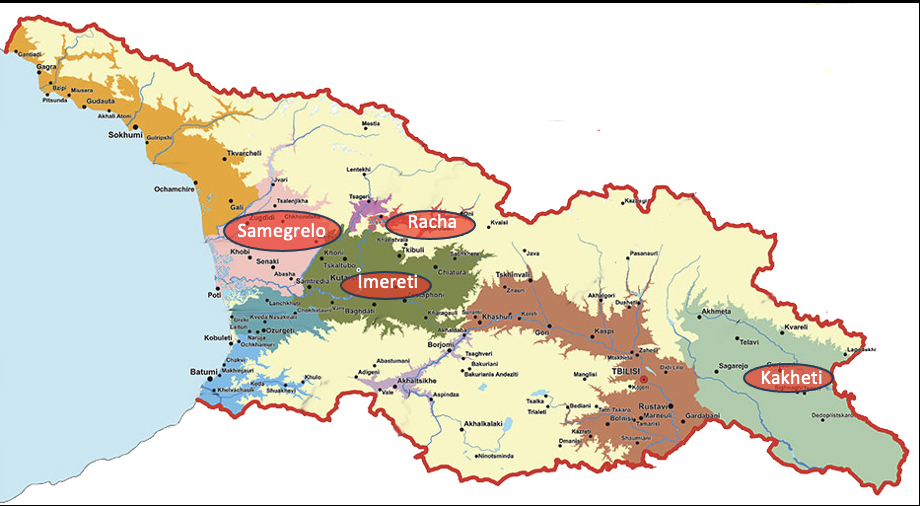The Wines
The seeds of K’AVSHIRI date back to 1988 when Robert Joseph, then wine critic of the London Sunday Telegraph, editor of the Good Wine Guide and founder-chairman of the International Wine Challenge, made his first trip to Georgia.
Then still part of the Soviet Union, it was a very different country, but Joseph was fascinated by the architecture, the impenetrable language, the delicious east-meets-west cuisine, and wines that were like nothing he had ever had before
In 2018, after several other visits to Georgia, Joseph, who’d given up wine criticism in 2005 to launch the innovative and highly successful le Grand Noir range of wines in France, met Vladimer Kublashvili, chief winemaker of Winery Khareba.
Joseph was immediately struck by Kublashvili’s talent and imagination and, over the course of a wide-ranging tasting of wines made from indigenous and often rare Georgian grapes in the Kakheti and Imereti regions, the two men began to imagine the possibility of working together to make a rather special wine.
A musical mosaic
What they had in mind was a mosaic of grape varieties, soils, microclimates and techniques, including fermentation in Georgia’s traditional qvevris.
Some wine traditionalists are ambivalent about blends, overlooking the fact that all great Médoc Crus Classés and most great Champagne and port, owe their character and complexity to the marriage of complimentary components.
Is Debussy’s Clair de Lune a finer piece of music because it is played as a piano solo than an orchestral piece like Berlioz’s Symphonie Fantastique?
Would Miles Davis’s seminal Kind of Blue album have been better if it had been performed by a single musician?
From the outset, the two men wanted to create a white wine that was immediately recognisable as Georgian, but with a fine wine character all of its own. They were inspired by wines like Spain’s Vega Sicilia, Penfolds Grange and Mas de Daumas Gassac, all of which had stepped outside the mainstream of their day.
First attempt: the White
The first exploratory red and white blends were made in 2019. Then came the pandemic, followed by further efforts in 2022. With each session, Joseph and Kublashvili learned more about the way the grape varieties interacted with each other and the role qvevri fermentation and a subtle touch of oak could play.
What they were doing, they realised, was writing and orchestrating a piece of music, adding and removing instruments until the harmony was just right. Often, they were surprised.
Joseph, who had lived in Burgundy, never imagined the contribution of including less than three percent of Aligoté would make to the texture of the white. It was Kublashvili’s idea to add a note of fruit by adding a similarly small amount of Muscat.
It was always clear that qvevris would play a part, but experimentation revealed that a mixture of qvevri-fermentation and wine fermented on its skins in stainless steel would create the style and flavours they were looking for.
Blending vintages was also a fascinating process of discovery. The two men were grateful for having set aside some 2017 Rkatsiteli - the most recent vintage when they began the process. It proved to be an important ingredient.
The 2023 Assemblage White
Grapes: Mtsvane (20%); Rkatsiteli (15%); Rkatsiteli Kakhuri (15%); Krakhuna (15%); Tsitska (10%); Tsolikouri (8%); Khikhvi (7%); Aligoté (3%); Muscat (2%); Kisi (2%); Mtsvivane (3%).
Regions: Kakheti (60%); Imereti (40%).
Winemaking: Stainless Steel fermentation (75%); Qvevri Fermentation (8%); Skin-Fermentation in Stainless Steel (5%); Oak Fermentation (12%).
Vintages: 2023 (52%); 2022 (30%); 2021 (8%); 2017 (10%)
The Red
Both men were fascinated in the idea of co-fermenting white grapes with the Saperavi which can be a little rustic when used by itself. Why, they wondered, is this old technique only used for Syrah/Shiraz and Viognier grapes in one corner of the northern Rhône and by Australians following the same recipe for their versions of its wine?
They experimented with Kisi, Krakhuna, Rkatsiteli and Mtsvane co-ferments and, when tasting the results blind, repeatedly found that the last pair of these had the best effect - giving the resulting red wine the elegance the two men were looking for.
The inclusion of 5% of lightly air-dried Aladasturi grapes was also a fundamental part of the blend.
The 2022 Assemblage Red
Grapes: Saperavi (58.3%); Ojaleshi (14%); Aleksandrouli (9.5%); Aladasturi (4.8%); Otskhanuri Sapere (4.7%); Merlot (4.7%); Rkatsiteli* (2.4%); Mtsvane* (1.6%).
*In co-ferment with Saperavi
Regions: Kakheti (62%); Imereti (14.5%); Samegrelo (14%); Racha (9.5%)
Winemaking: Stainless Steel fermentation (28%); Qvevri Fermentation (24%); Oak Fermentation (10%); *Saperavi-Rkatsiteli and Saperavi-Mtsvane co-Fermentation (28%)
Vintages: 2022 (80%); 2021 (10%); 2020 (4.5%); 2017 (5.5%)
The (gastronomic) Rosé
From the outset, the third wine in the series, the rosé, was intended not to be a light, refreshing, pink wine to sip by the side of a pool in St Tropez (though it will hopefully serve that purpose for those who wish it to). Like the red and white, its ambition is to be a complex, textured wine that deserves a little attention and a place on serious tables.
While there was no blending of vintages, the same ‘mosaic’ K’AVSHIRI philosophy of combining techniques, grapes and regions was applied. With the advantage of everything that had been learned while making the red and white.
For more technical details, please click here
The 2024 Assemblage Rosé
Grapes: Ojaleshi (64%); Saperavi (14.5%); Aleksandrouli (9%); Aladasturi (9%); Mtsvane* (3.5%).
*In co-ferment with Saperavi
Regions: Samegrelo (64%); Kakheti (18%); Imereti (9%); Racha (9%)
Winemaking: Stainless Steel fermentation (37.5%); Barrel Fermentation (26.5%); Qvevri Fermentation (18%); Saperavi-Mtsvane Co-Fermentation (18%).
Vintages: 2024 (100%)
To learn more about where to find these wines, please use the form on this page






